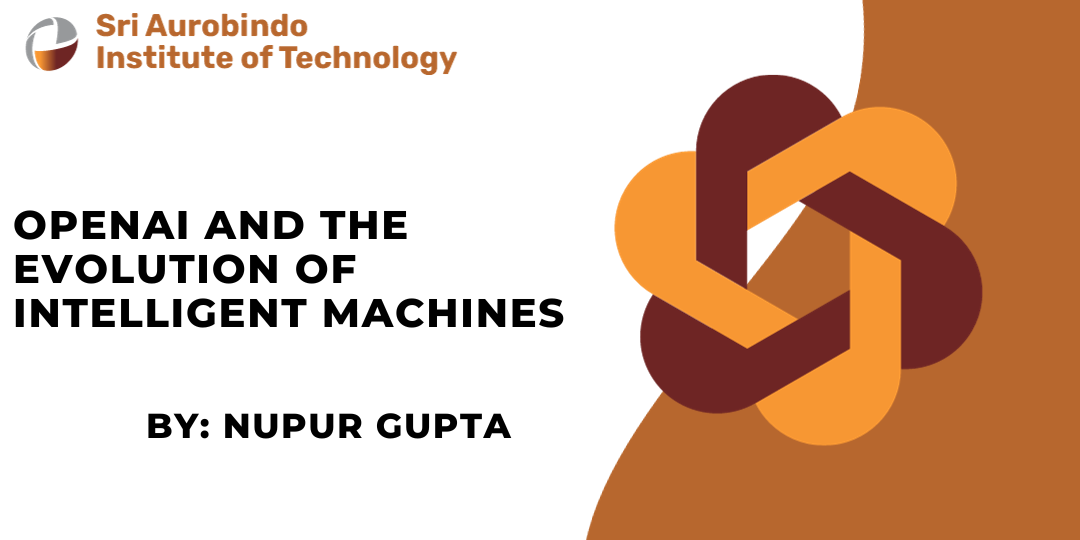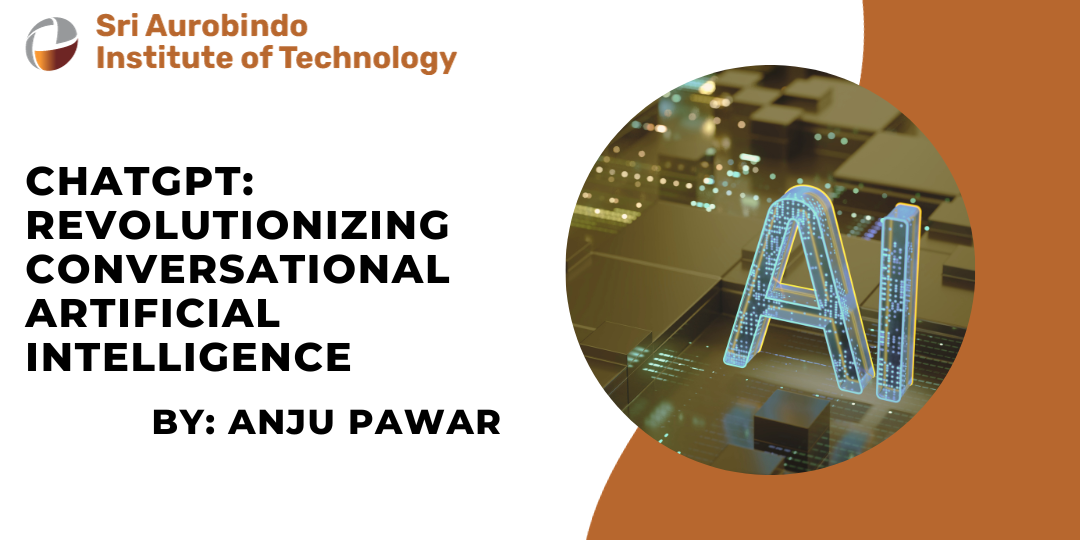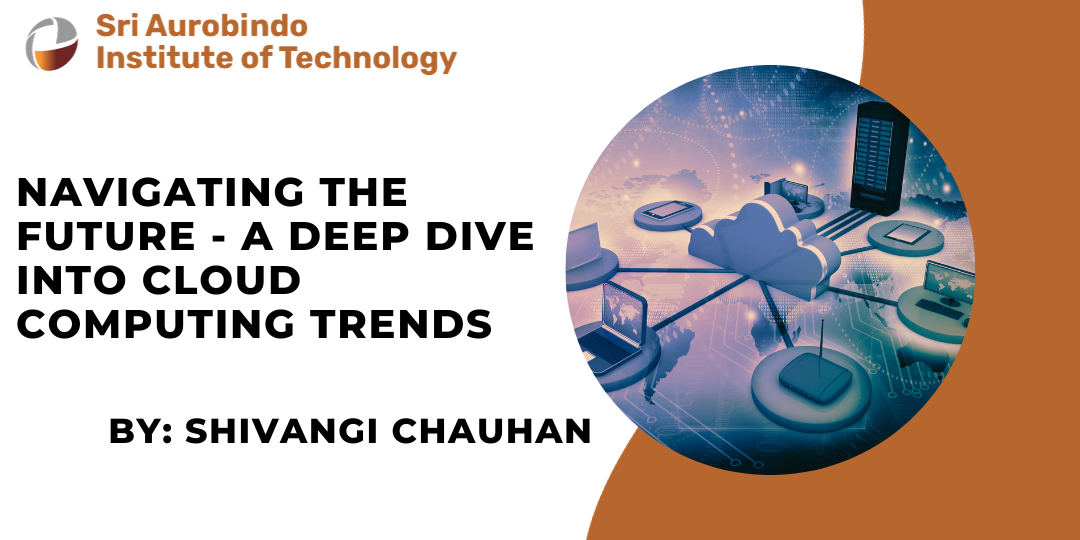OpenAI and the Evolution of Intelligent Machines
OpenAI remains a leader and a force to be reckoned with in its ever-evolving environment of micro-intelligence.

In the age of rapid technological progress, AI and ML have become a key element in innovation by revolutionizing our relationship with technology via automated decision-making. In this blog, we will discuss AI and ML in a deliberate manner where the definitions, uses, and dynamic relationships can all be found on that digital landscape.
Table of Contents:
Understanding Artificial Intelligence
Decoding Machine Learning
The Interplay between AI and ML
Distinguishing Features
Benefits of Harnessing AI and ML in Tandem
Applications Across Industries
Conclusion
In essence, AI is the overall term for a wide range of technologies that attempt to build machines able to mimic human intelligence about task performance. The AI field encompasses much more than simply automation. Sri Aurobindo Institute of Technology understands that AI is a tool for transformation, which explains our dedication to incorporating advanced technologies into the learning atmosphere.
That is, Artificial Intelligence can be defined as the creation of machines that mimic human intelligence. These machines are meant to do the work that only humans could previously perform – jobs involving problem-solving, decision-making, or language understanding.
Think about virtual personal assistants such as Siri or Alexa. These machine-learning technologies are capable of understanding natural language, answering user questions, and performing commands. As a real-life case, this application shows that AI technologies are incorporated into regular devices for a better user experience.
In the vast domain of AI, we find Machine Learning (ML), which is autonomous and improves over time. We will discuss the spirit of ML, explaining how algorithms play a crucial part in defining what is learned without getting bogged down by too many technical details.
Machine Learning is a branch of AI that makes machines learn from available data, thus making gradual improvements without specific programming. Unlike systems that depend on predetermined rules, ML-based solutions derive their knowledge from algorithms utilized for data analysis and decision-making.
Consider ML algorithms as recipes. If you were training a machine to recognize handwritten digits, the algorithm would process millions of numbers for pattern recognition and correct identification of new instances. The most important characteristic of Machine Learning lies in this autonomous learning process.
AI stands out as a broad concept that encompasses all ML, deep learning, robotics, expert systems, and natural language processing are considered subfields. To explore these divergent spheres, we hope to convey the complexity of AI articulately.
AI acts as a catch-all term that includes several domains. Apart from Machine Learning, it encompasses Deep Learning, Robotics, Expert Systems, and Natural Language Processing along with other. Each sub-discipline seeks to achieve the goal of developing intelligent systems.
For instance, Deep Learning relies on neuro-inspired networks and performs well in image as well as speech identification. Robotics is concerned with the development of smart machines that are capable of performing physical interactions. However, understanding these sub-fields brings a comprehensive picture of AI’s wide range of uses.
To differentiate AI and ML, we’ll point out their respective foci. AI solves difficult problems with human-like intelligence, and ML trains machines to carry out tasks via pattern recognition. Practical applications of AI and ML will be highlighted with real-life examples to demonstrate their influence in every industry.
Artificial Intelligence is all-encompassing, seeking to create intelligent systems that can solve difficult problems in different fields as inspired by human thinking. It includes reasoning, learning, and decision-making.
Alternatively, machine learning has a narrower goal. It is concerned with teaching machines to do a particular job by studying data patterns. A simile can be to teach a computer and have it identify spam emails based on previous history, thus being able to make correct predictions.
Take, for example, a virtual personal assistant utilizing both AI and ML. The use of AI permits understanding and answering user questions (AI’s broad reach); the employed machine learning component enables system improvement in response over time by evaluating responses based on users' interactions with it (ML’s precision).
It is in the combination that their real power lies. This part will elucidate how these technologies mesh with each other to unleash synergies and cover concrete business use cases without using promotional material.
The most potent combinations of AI and ML emerge when these technologies integrate. Synergies can be achieved from the smooth alignment of AI and ML, which improves decision-making processes to yield better results that are more accurate and focused.
In the corporate world, ML and AI bring real value. For instance, an online marketplace may utilize AI by offering customers customized product suggestions based on their individual preferences and past purchases. In this case, ML improves such recommendations over time to perfect the user journey.
In this section, we are going to explore how AI and ML systems changed the world of industries. We will see the practical applications of these technologies across sectors such as healthcare manufacturing, e-commerce, financial services, and telecommunications.
The influence of AI and ML in healthcare is quite profound. For instance, diagnostic devices may use AI algorithms to analyze medical images to detect abnormalities. As the systems improve their diagnostic accuracy through Machine Learning algorithms, better patient outcomes are achieved.
AI and ML are used by manufacturing industries in predictive maintenance. Data is gathered using sensors on production machines, and AI-based algorithms predict the point at which equipment will fail. Such a proactive approach reduces downtime and increases efficiency in general.
AI and ML are used by e-commerce platforms for personalized experiences. The recommendation engines are based on the analysis of user behavior, preferences, and purchase history to recommend products designed for individual tastes that make store shopping more enjoyable.
Financial institutions exploit AI in risk analysis and fraud detection. Machine learning models detect fraud in financial transactions based on their analysis of patterns, and the systems keep adapting to new data as it comes.
Telecom companies use AI for network performance optimization. Machine Learning models gather data to determine network congestion, such that proactive measures can be taken to propagate better connectivity and ensure a smooth user experience.
The voyage through Artificial Intelligence and Machine Learning has been dynamic. The constant advancement of these technologies opens opportunities and threats alike. This blog is designed to facilitate a general perception, unveiling vaporous concepts so that users can have at their disposal an overview of how AI and ML may affect our world. AI and ML terrain is in constant change as it comes up with more issues to face that pose new problems yet create opportunities.

OpenAI remains a leader and a force to be reckoned with in its ever-evolving environment of micro-intelligence.

Conversations have evolved into a miraculous technology and is running the whole world as we communicate. Conversational AI has taken center stage,...

As we stand on the edge of entering the digital age, cloud computing has emerged as one of the most essential technologies that is reshaping our...